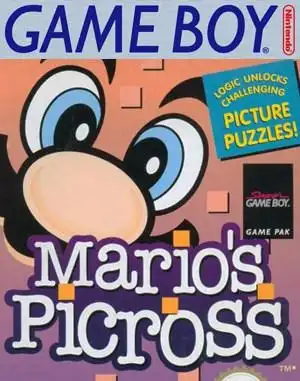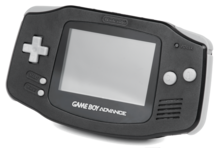Long before Picross became a staple on Nintendo consoles, a little puzzle game landed on the Game Boy in 1995 bearing the name of the world's most famous plumber: Mario's Picross. Yet, despite the iconic branding, this wasn't an instant mega-hit. In fact, its initial reception in the West was... well, a bit lukewarm.
Fast forward to today, and Mario's Picross is often cited as a hidden gem, a perfect fit for the portable console it graced. What changed? Let's uncover the surprising journey of this addictive picture-logic puzzle.
What Exactly is Picross?
If you're new to the world of Picross, sometimes called Nonograms, picture this: you have a grid, and numbers along the sides and top. These numbers tell you how many consecutive squares in that row or column need to be filled in. By using logic and deduction, you gradually fill in squares and mark others as empty, eventually revealing a hidden pixel image. It's like a crossword puzzle, but with pictures! Mario's Picross adds a charming Nintendo theme to this concept, with completed puzzles revealing familiar characters and items.
The Game Boy Original: A Rocky Start
Released in Japan in 1995 and later in North America and Europe, Mario's Picross arrived at a time when puzzle games were popular, but perhaps this particular style was less familiar to Western audiences. Unlike the block-dropping frenzy of Tetris or the gem-matching of Bejeweled, Picross is a slower, more deliberate affair.
Initial sales in North America were reportedly poor, leading Nintendo to hesitate on localizing future Picross titles for a while. This lack of immediate commercial success mirrored a somewhat divided critical reception at the time.
Critics Couldn't Quite Agree!
Looking back at reviews from the mid-90s reveals a fascinating split in opinions on Mario's Picross. Some reviewers found the concept boring or tedious, likening it to a math test rather than a fun game. Electronic Gaming Monthly's review was particularly notable for its contrasting viewpoints, resulting in a relatively low average score from their panel.
However, other publications saw the genius in its simplicity and addictive nature. Nintendo Power and Game Informer gave it solid, positive reviews, praising it as an excellent game for travel. GamePro was also quite positive, giving it a high score. Perhaps the most enthusiastic review came from Computer & Video Games (CVG), which lauded it as incredibly addictive, original, and a perfect puzzle game for the platform.
This wide range of scores, from lukewarm to glowing, shows that Mario's Picross was a game that clicked instantly with some, while others just didn't get it. Its average critical score back then wasn't spectacular, but it certainly wasn't universally panned either.
Why It Holds Up Today
Despite the initial commercial and critical uncertainty, Mario's Picross has found a dedicated fanbase over the years. Why?
- Perfect Portable Fit: The turn-based, logical nature of Picross is ideal for short bursts of play on a handheld device. It's easy to pick up and put down.
- Addictive Logic: Once the Picross concept clicks, it becomes incredibly satisfying to solve puzzles and reveal the hidden images. The difficulty curve in Mario's Picross feels just right, starting simple and gradually becoming more complex.
- Charming Presentation: While simple by today's standards, the pixel art and familiar Mario universe theme add a layer of charm that makes solving puzzles feel rewarding.
It's a game that rewards patience and deduction, offering a different kind of challenge than many other retro puzzle titles.
Beyond the Game Boy: Mario's Super Picross
While the Game Boy version is the most widely known in the West due to its inclusion on platforms like Nintendo Switch Online, it's worth mentioning that Japan received Mario's Super Picross on the Super Famicom in 1995 as well. This version offered more puzzles and a slightly different presentation, further cementing Mario's association with the puzzle genre in his home country.
Where to Play Mario's Picross Today
Thankfully, experiencing this retro puzzle gem is easier than ever:
- Nintendo Switch Online: Subscribers can play the original Game Boy version through the Game Boy app.
- Emulation: The game is readily available via Game Boy emulators.
- Original Hardware: If you have a working Game Boy and cartridge, nothing beats the authentic experience!
(Note: Links to specific emulators or ROM sites cannot be provided, but official channels like Nintendo Switch Online are great options.)
The Legacy of Mario's Picross
Mario's Picross might not have been a runaway success upon release, but its enduring appeal is a testament to the quality of the core puzzle design. It introduced many Western players to the world of Nonograms and paved the way for future Picross titles on Nintendo platforms. It's a quiet, logical classic that perfectly captures the simple, addictive fun the Game Boy was known for. If you're looking for a retro gaming puzzle game that offers a satisfying mental workout, give Mario's Picross a shot – you might just find your new obsession.
FAQ
Q: What type of game is Mario's Picross? A: It's a nonogram or picture logic puzzle game where you use numbers to fill in squares on a grid and reveal a hidden image.
Q: Is Mario's Picross difficult? A: It starts with easy puzzles and gradually increases in difficulty, introducing larger grids and more complex number patterns.
Q: Are there other Mario Picross games? A: Yes, the most notable is Mario's Super Picross for the Super Famicom (Japan only initially), and the Picross series has continued on other Nintendo systems, though often without the direct "Mario's" branding outside of these early entries.
Q: Can I play Mario's Picross on modern consoles? A: Yes, the original Game Boy version is available to play on Nintendo Switch via the Nintendo Switch Online service (specifically the Game Boy app).


